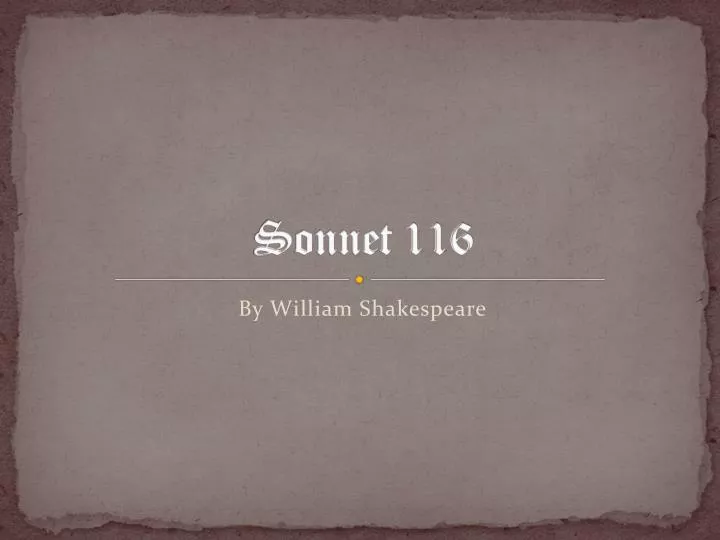

Katherine Duncan-Jones and others have, in recent years, argued authorial intent for this alleged “printer’s error.” Duncan-Jones suggests that the open parentheses may signify the poet and the fair youth’s “failure to couple,” while John Lennard sees in them “the silence of the grave.” I hope to demonstrate that, by thinking in visual terms, we might one day be able to unlock the story behind the most enigmatic verse sequence in English poetry. This research is aimed to analyze kinds of love and how to love depicted in the sonnet 116 written by William Shakespeare. rarebooks peterharrington poem sonnet lovesonnet. The most striking visual effect occurs in Sonnet 126, the last of the “fair youth” sonnets, which consists of six rhymed couplets followed by two empty sets of brackets. In the 1640 edition, Sonnet 116 is given the thematic title 'The Picture of True. I shall be pursuing these analogies in my paper. Let me not to the marriage of true minds.

The sonnet form is roughly the poetic equivalent to the portrait miniature (a fad of the day) in art. One might even see in the poems, as did Lady Mary Worth and John Donne in their “crowns” of sonnets, the links in a chain, or necklace. What is the meaning of 'let me not to marriage of true mind' The first lines of Sonnet 116 say ''Let me not to the marriage of true minds admit impediments.'' Essentially, the speaker is saying. The sonnet form itself is emblematic of a number of familiar referents, including an escutcheon, a “glass” (mirror), a leaf, and a seal. They may be less aware, especially if they are unfamiliar with the original 1609 Quarto edition, that the poems may have been arranged to have a visual impact as well.

Students of the sonnets are no doubt aware that they abound in wordplay that rewards multiple readings.


 0 kommentar(er)
0 kommentar(er)
